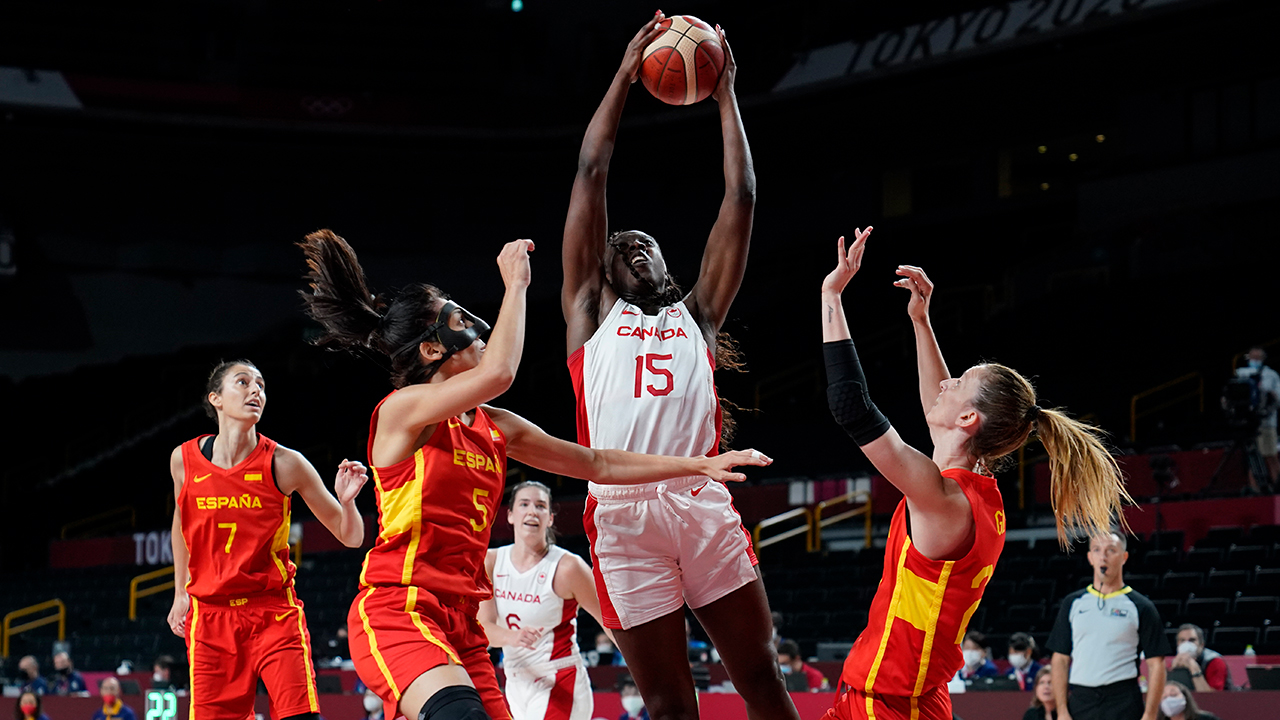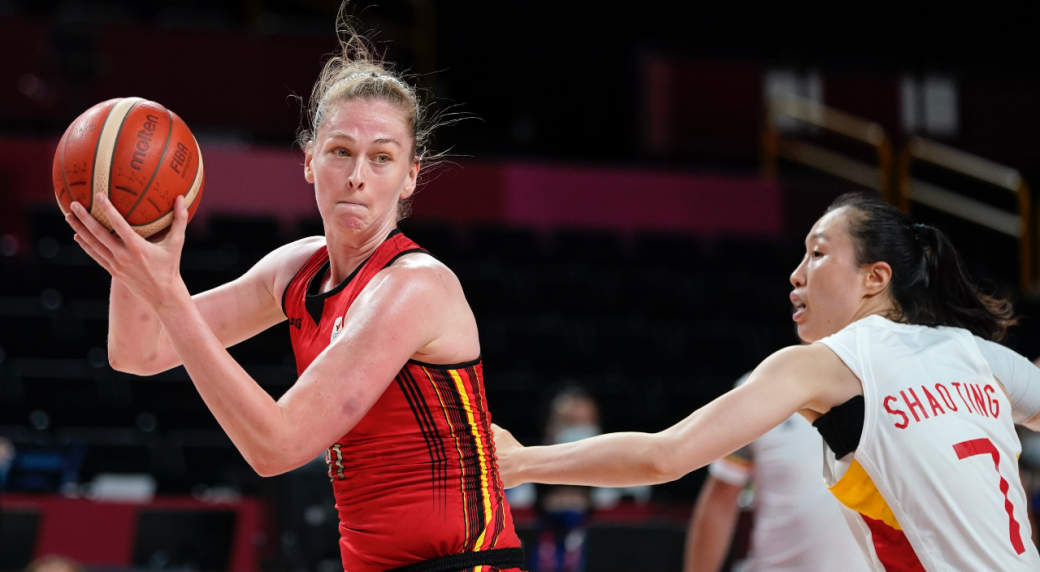With Team USA nabbing its seventh consecutive gold medal at the 2020 Tokyo Olympic Games, on top of Dawn Staley leading a squad of collegiate athletes to gold at the 2021 FIBA Women’s AmeriCup, it’s easy to see the dominance that is women’s basketball in the United States.
And if those tournaments showed anything, it’s the global impact and growth of women’s basketball, and how the WNBA has now become home to more and more international players.
All 12 of the Americans on those squads belong to a WNBA roster, but players from Spain, Australia, Belgium, Korea and, of course, Canada also ply their trade in the league, proving that limited roster spots are even harder to come by due to growing talents and aspirations across the globe to get into the league and play with the world’s best.
“When you talk about the rest of the world, of course they’re getting better. I think it’s a product of a lot of players playing in the WNBA, which is a very high level,” said Sue Bird post-game after USA defeated Serbia in the Tokyo semifinals.
“It gets you ready for this kind of level, they go back to their countries and they play very well on their Olympic teams.”
Other teams such as Nigeria, France and China are the home of many players who are either not playing in the current WNBA season and will be available next year, have been drafted to the league, or have played in the year previous to the 2020 bubble season. That includes the likes of Iliana Rupert, Gabby Williams, Erica Ogwumike, Xu Han and 2019 WNBA Finals MVP Emma Meesseman.
Canada — which had three current WNBA stars in Kia Nurse, Natalie Achonwa and Bridget Carleton — also showed its bright future in the league thanks to performances by Laeticia Amihere and Shaina Pellington, who are expected to enter the WNBA draft in the next few years.
 Canada's Laeticia Amihere (15) shoots over Spain's Cristina Ouvina (5) and Laura Gil (24), right, during women's basketball preliminary round game at the 2020 Summer Olympics, Sunday, Aug. 1, 2021. (Charlie Neibergall/AP)
Canada's Laeticia Amihere (15) shoots over Spain's Cristina Ouvina (5) and Laura Gil (24), right, during women's basketball preliminary round game at the 2020 Summer Olympics, Sunday, Aug. 1, 2021. (Charlie Neibergall/AP)
Even for those who aren’t currently on a national team roster, being able to watch their WNBA teammates represent different nations and bring eyes back to the league after the games is also just as important to the global growth of the league.
“There’s so many people who are representing their countries with pride at the highest level, it’s been a lot of fun staying up late to watch the games and seeing how they’re representing us,” said Washington Mystics guard Sydney Wiese.
For a team like Australia — whose Olympic dreams were cut short vs. the U.S. in the quarterfinals — multiple WNBA stars headlined the roster, and even without the presence of all-star centre Liz Cambage, many others proved why the Land Down Under has such a strong presence in the sport.
Leilani Mitchell, guard for the Mystics, led the Opals’ charge during the quarterfinal game, scoring four three-pointers as well as tallying six assists, proving unstoppable with her 14 points — over one quarter of Australia’s 55 — while Seattle Storm centre Ezi Magbegor added five points of her own despite the loss.
“To be an island on the other side of the world and still be top three in the world, I don’t think people really respects Australia the way they should. We have so many women in this league,” said Cambage after the WNBA All-Star Game.
“If it wasn’t for (Michele) Timms being the first woman to come out here and play in the WNBA, I’m really lucky for Sandy Brondello to be our head coach of the Opals, she really paved the way for us as well.”
France secured a podium finish in the Games thanks to a stellar performance by Williams, who is currently suspended for the 2021 season due to a transaction from the Chicago Sky, but will be suiting up for the Los Angeles Sparks upon her return to the WNBA.
Williams had 17 points and eight rebounds in the bronze-medal game vs. Serbia, securing a better finish than France's fourth at the 2016 Rio Olympic Games. She felt that playing for the national team allowed her to have fun and become the player she needed to be before her return to the United States.
Even during the 2021 WNBA Draft, two of the top eight selections were from outside of the United States, with second-overall pick Awak Kuier coming from Finland, and No. 8 Shyla Heal hailing from Australia.
While players like Williams and Mitchell were both are born in the United States and are eligible to play for their national teams due to their parents, the visibility and growth of programs in each nation results in the expansion of the game worldwide and more eyes on the WNBA due to these players choosing to play for another country.
And that's something to celebrate.

